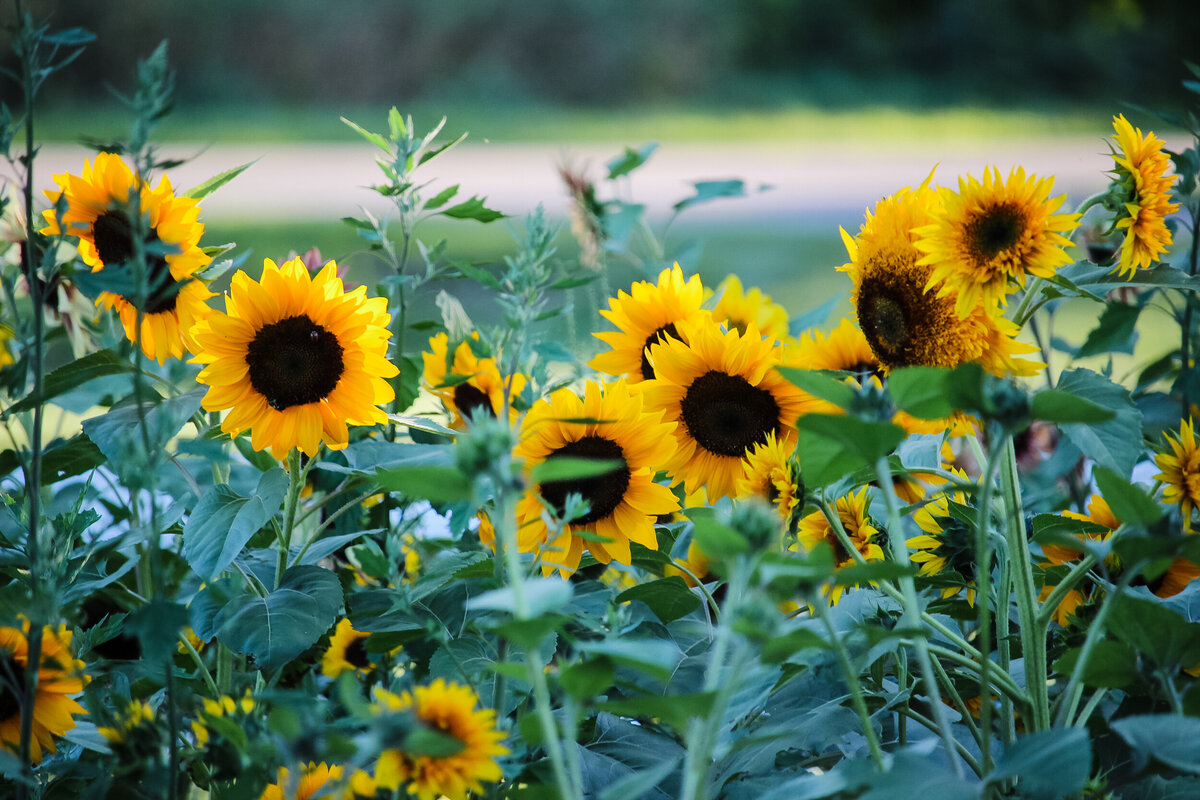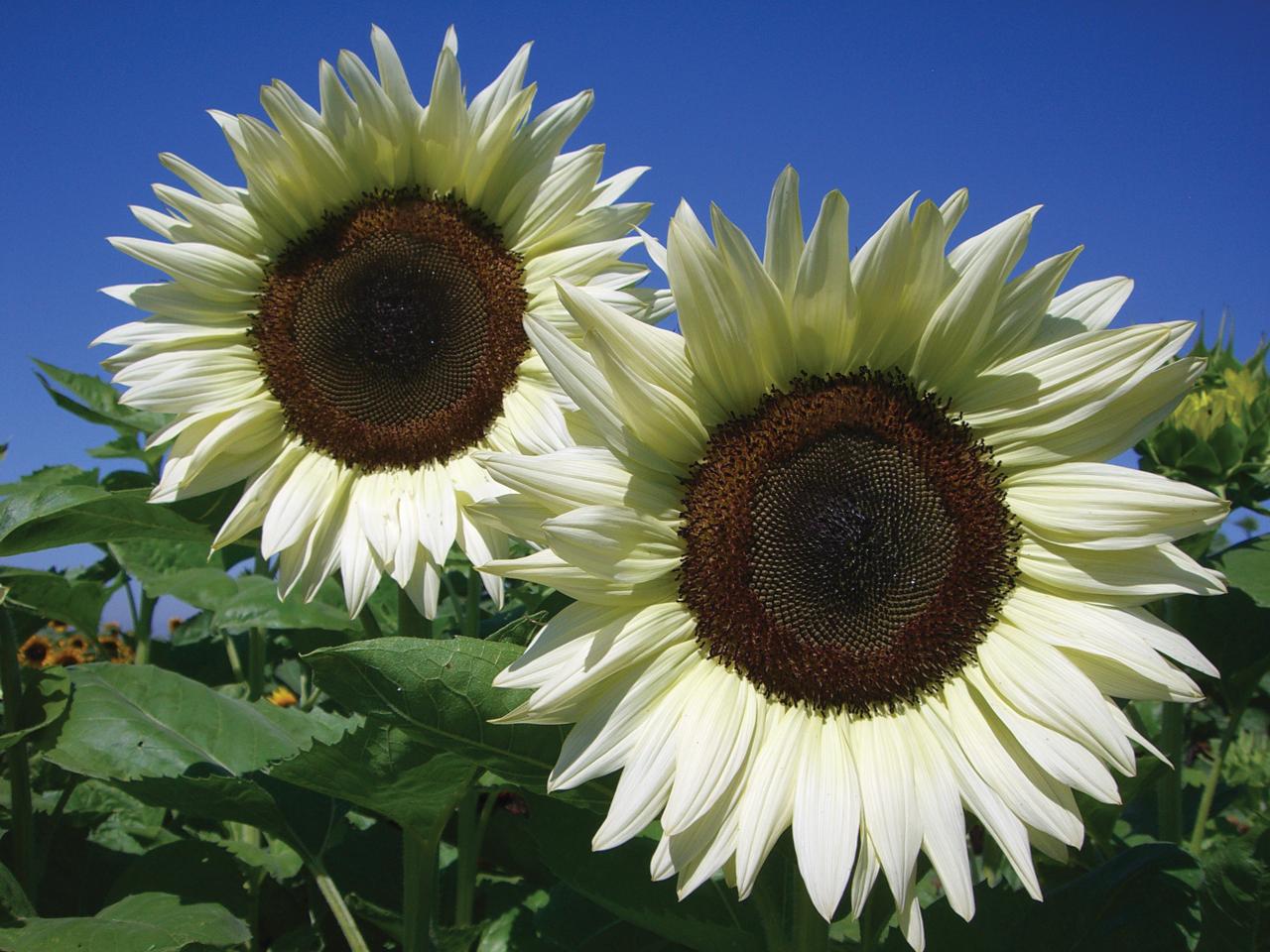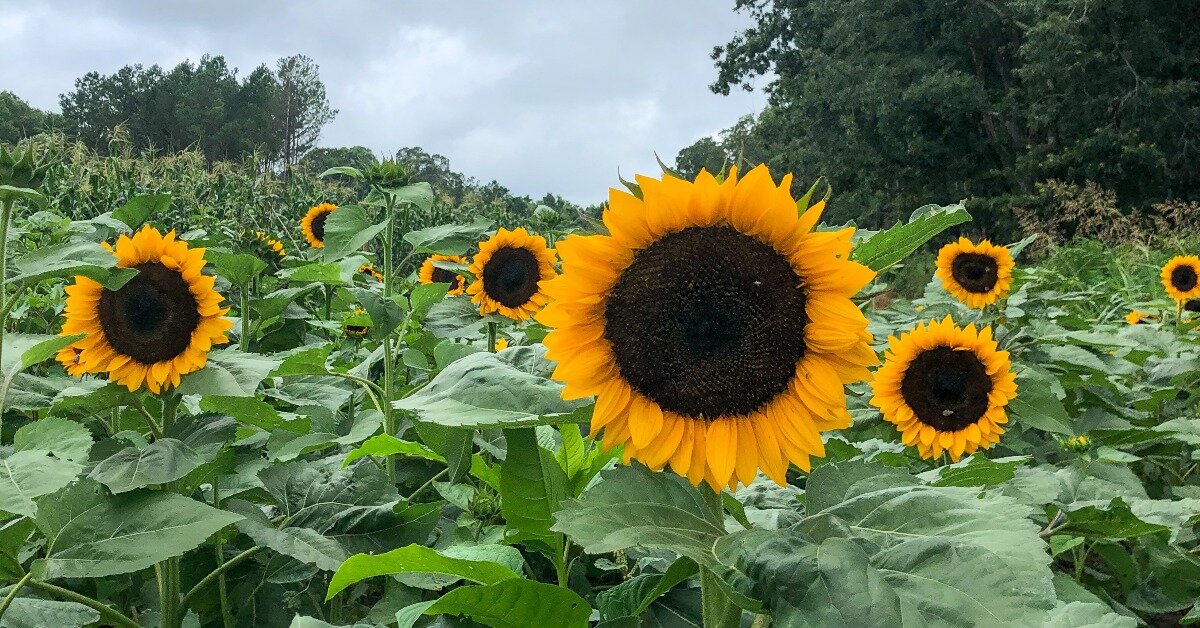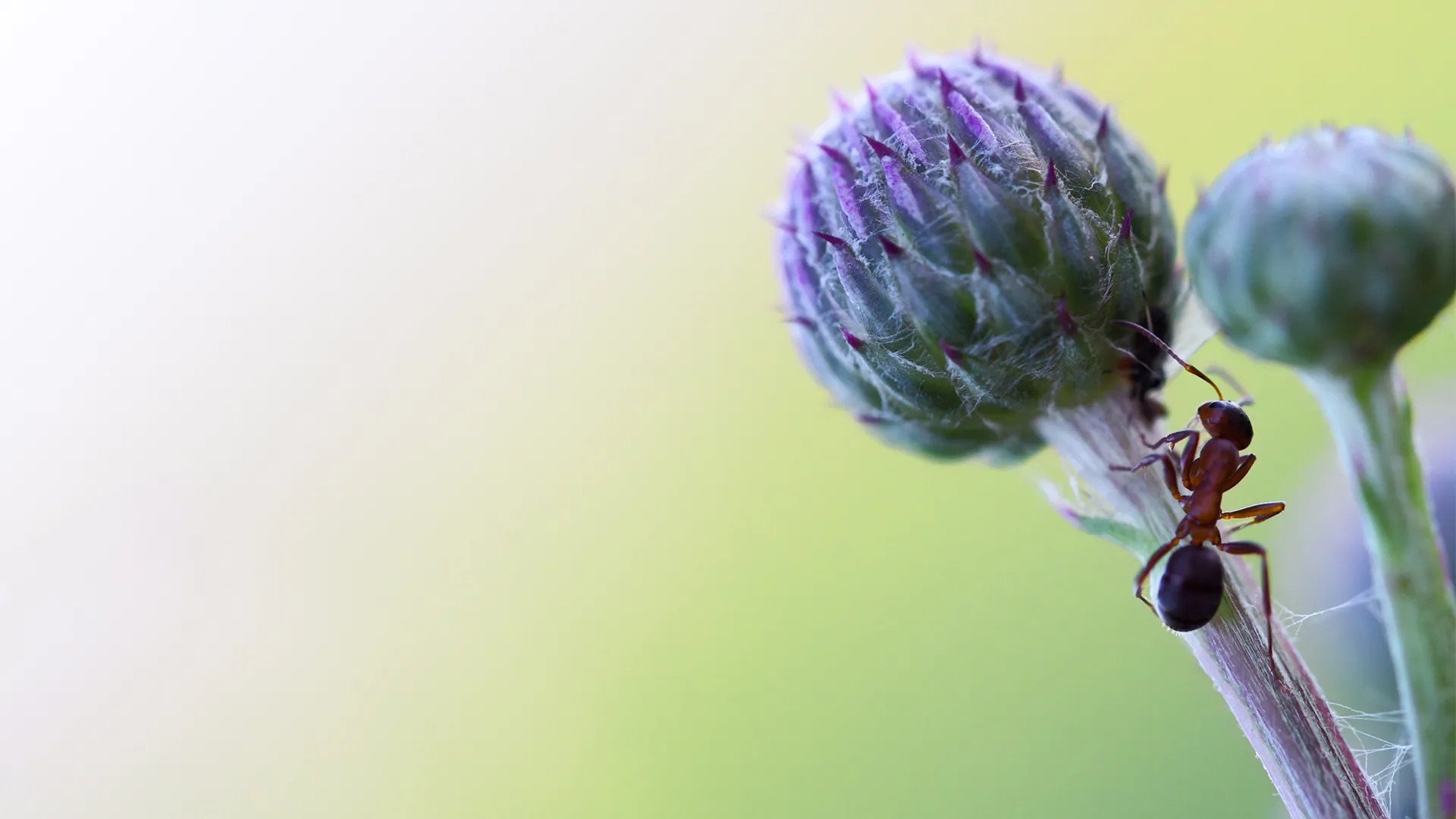Home>Types of Gardening>Ornamental Gardening>Where Are Most Sunflowers Grown


Ornamental Gardening
Where Are Most Sunflowers Grown
Modified: January 22, 2024
Discover the top locations where sunflowers are cultivated and find inspiration for your ornamental gardening endeavors. Explore the ideal conditions for growing sunflowers and enhance your garden with these vibrant blooms.
(Many of the links in this article redirect to a specific reviewed product. Your purchase of these products through affiliate links helps to generate commission for Chicagolandgardening.com, at no extra cost. Learn more)
Table of Contents
Introduction
Sunflowers: A Symbol of Radiance and Abundance
Sunflowers, with their vibrant yellow petals and imposing height, have long captivated the hearts of gardening enthusiasts and nature lovers alike. The genus Helianthus, which translates to “sunflower” in Greek, comprises nearly 70 species, each boasting its own unique charm and characteristics. These iconic flowers are not only a sight to behold in gardens and fields but also hold significant agricultural and cultural value. From their origins in North America to their widespread cultivation across the globe, sunflowers have become synonymous with vitality, positivity, and agricultural prosperity.
As a versatile plant, sunflowers offer a myriad of uses, from their ornamental appeal to their valuable seeds, which are rich in oil and nutrients. Beyond their practical applications, sunflowers hold a special place in various cultures and traditions, symbolizing adoration, loyalty, and longevity. Whether adorning landscapes, serving as a source of sustenance, or inspiring artistic endeavors, sunflowers continue to play a multifaceted role in our lives.
This article delves into the fascinating world of sunflower cultivation, exploring the top producing regions worldwide and shedding light on the agricultural significance of these radiant blooms. Join us on a journey through the sunflower fields as we uncover the global impact of this beloved plant.
Sunflower Cultivation
From their humble beginnings in North America, sunflowers have evolved into a widely cultivated crop with diverse applications. Sunflower cultivation involves a series of meticulous steps, from selecting the ideal soil conditions to nurturing the plants to their full potential. These resilient flowers thrive in sunny locations, hence their name, and are known for their ability to adapt to various climates and soil types.
When it comes to planting sunflowers, timing is crucial. Typically sown in the spring, sunflower seeds require well-drained soil and ample sunlight to germinate and flourish. The selection of the appropriate sunflower variety is also a key consideration, as different types exhibit varying characteristics, such as height, flower size, and oil content. Once planted, these hardy flowers demand minimal maintenance, making them a popular choice for both commercial and amateur growers.
As sunflowers mature, their striking blooms follow the sun’s trajectory throughout the day, a phenomenon known as heliotropism. This natural behavior not only adds to the allure of sunflower fields but also serves a practical purpose by maximizing the plants’ exposure to sunlight. The gradual transition from radiant blooms to robust seed heads marks the culmination of the sunflower’s growth cycle, with the seeds maturing and developing their renowned nutritional properties.
Harvesting sunflowers is a labor-intensive process that requires precision and care to ensure optimal seed quality. Once harvested, the seeds can be used for various purposes, including producing high-quality oil, providing nutritious snacks, and even serving as a source of bird feed. The versatility of sunflower cultivation extends beyond its agricultural significance, encompassing ornamental, culinary, and industrial applications, making it a truly multifaceted endeavor.
Top Sunflower Producing Countries
The cultivation of sunflowers spans the globe, with numerous countries contributing to the impressive production of this radiant crop. Among the top producers, Ukraine emerges as a leading force in the sunflower industry, renowned for its vast sunflower fields and substantial yield. The favorable climate and fertile soils of Ukraine provide an ideal environment for sunflower cultivation, positioning the country as a powerhouse in the global market.
Russia also holds a prominent position in sunflower production, leveraging its expansive agricultural landscape to cultivate substantial quantities of sunflowers. The favorable growing conditions in regions such as the Southern Federal District contribute to Russia’s significant output, solidifying its role as a key player in the sunflower market.
Argentina, nestled in the heart of South America, boasts a thriving sunflower industry, characterized by extensive cultivation and high-quality yields. The fertile plains of Argentina, particularly in the provinces of Buenos Aires and Córdoba, provide an optimal setting for sunflower cultivation, bolstering the country’s position as a major contributor to the global sunflower supply.
Other notable sunflower producing countries include Turkey, France, and Hungary, each renowned for their unique contributions to the sunflower market. Turkey’s strategic location at the crossroads of Europe and Asia, coupled with its favorable climate, has propelled it to the forefront of sunflower production, while France and Hungary have established themselves as key players in the European sunflower landscape, leveraging their agricultural expertise and resources to cultivate substantial sunflower crops.
These top sunflower producing countries not only meet domestic demand but also play a pivotal role in the global sunflower market, supplying the world with an abundance of this radiant crop and its valuable derivatives.
Sunflower Production in the United States
The United States stands as a significant contributor to the global sunflower production landscape, with several states playing a pivotal role in cultivating this vibrant crop. North Dakota, often referred to as the “Sunflower State,” leads the charge in sunflower cultivation, harnessing its expansive farmlands and conducive climate to yield substantial sunflower crops. The fertile soils and ample sunlight in North Dakota create an optimal environment for sunflower growth, solidifying the state’s position as a key player in the domestic and international sunflower market.
South Dakota also boasts a robust sunflower industry, capitalizing on its agricultural expertise and favorable growing conditions to cultivate noteworthy sunflower harvests. The state’s commitment to sustainable farming practices and innovation further enhances its contribution to the overall sunflower production in the United States.
Minnesota, another prominent sunflower-producing state, adds to the country’s bountiful sunflower output, leveraging its agricultural prowess and technological advancements to bolster the domestic supply of this radiant crop. The dedication of Minnesota’s farmers to sunflower cultivation reflects the state’s integral role in meeting the nation’s sunflower demand.
Other states, including Texas, Kansas, and Colorado, also make substantial contributions to sunflower production in the United States, collectively shaping the country’s position as a key player in the global sunflower market. The diverse agricultural landscapes and innovative practices across these states underscore the nation’s capacity to sustainably cultivate sunflowers, meeting the needs of various industries and consumers.
Sunflower Production in Europe
Europe holds a prominent position in the global sunflower production landscape, with several countries contributing significantly to the cultivation and harvest of this radiant crop. Ukraine, often referred to as the “breadbasket of Europe,” emerges as a leading force in sunflower production, harnessing its fertile soils and favorable climate to yield substantial sunflower crops. The vast sunflower fields of Ukraine not only cater to domestic demand but also play a pivotal role in the European and international sunflower market.
Russia, with its expansive agricultural expanse, also stands as a key player in sunflower production in Europe, leveraging its favorable growing conditions to cultivate noteworthy sunflower harvests. The Southern Federal District, in particular, serves as a hub for sunflower cultivation, contributing significantly to the country’s substantial sunflower output and its impact on the European market.
France, renowned for its agricultural expertise and rich farmlands, plays a vital role in European sunflower production, with regions such as Occitanie and Nouvelle-Aquitaine contributing to the country’s impressive sunflower yield. The commitment of French farmers to sustainable agricultural practices further enhances the nation’s standing in the European sunflower landscape.
Hungary, nestled in the heart of Central Europe, also makes substantial contributions to sunflower production, leveraging its fertile plains and agricultural heritage to cultivate high-quality sunflower crops. The dedication of Hungarian farmers to sunflower cultivation underscores the country’s integral role in meeting the sunflower demand within Europe and beyond.
These European nations, along with others such as Bulgaria and Romania, collectively shape the continent’s position as a powerhouse in the global sunflower market, underscoring the region’s capacity to sustainably cultivate sunflowers and meet the diverse needs of industries and consumers worldwide.
Sunflower Production in Asia
Asia, with its diverse agricultural landscapes and favorable climate, contributes significantly to the global sunflower production, with several countries playing a pivotal role in cultivating this radiant crop. India, known for its agricultural heritage, stands as a prominent force in sunflower production, leveraging its vast farmlands and favorable growing conditions to yield substantial sunflower crops. The states of Karnataka, Andhra Pradesh, and Telangana are among the key contributors to India’s impressive sunflower output, meeting domestic demand and contributing to the country’s position in the global sunflower market.
China, with its extensive agricultural expanse, also holds a substantial share in sunflower production in Asia, harnessing its fertile plains and technological advancements to cultivate noteworthy sunflower harvests. The dedication of Chinese farmers to sunflower cultivation underscores the country’s capacity to meet the sunflower demand within the region and beyond.
Kazakhstan, nestled in Central Asia, emerges as a significant player in sunflower production, with its expansive farmlands and favorable climate creating an optimal environment for cultivating high-quality sunflower crops. The country’s commitment to sustainable farming practices further enhances its contribution to the overall sunflower production in Asia.
Other Asian nations, including Turkey and Myanmar, also make notable contributions to sunflower production, collectively shaping the continent’s position as a key player in the global sunflower market. The agricultural expertise and innovative practices across these countries underscore Asia’s capacity to sustainably cultivate sunflowers, meeting the needs of various industries and consumers worldwide.
Sunflower Production in Africa
Africa, with its diverse agro-climatic zones and agricultural potential, plays a significant role in the global sunflower production landscape, with several countries contributing to the cultivation and harvest of this vibrant crop. Tanzania emerges as a leading force in sunflower production on the continent, leveraging its fertile lands and favorable climate to yield substantial sunflower crops. The regions of Singida, Ruvuma, and Iringa are among the key contributors to Tanzania’s impressive sunflower output, meeting domestic demand and contributing to the country’s position in the global sunflower market.
South Africa also holds a prominent position in sunflower production, capitalizing on its agricultural expertise and favorable growing conditions to cultivate noteworthy sunflower harvests. The dedication of South African farmers to sunflower cultivation underscores the country’s capacity to meet the sunflower demand within the region and beyond.
Uganda, nestled in the heart of East Africa, emerges as a significant player in sunflower production, with its fertile soils and commitment to sustainable farming practices creating an optimal environment for cultivating high-quality sunflower crops. The country’s contribution to the overall sunflower production in Africa further enhances its role in meeting the continent’s sunflower demand.
Other African nations, including Kenya and Nigeria, also make notable contributions to sunflower production, collectively shaping the continent’s position as a key player in the global sunflower market. The agricultural expertise and innovative practices across these countries underscore Africa’s capacity to sustainably cultivate sunflowers, meeting the needs of various industries and consumers worldwide.
Conclusion
From the sun-kissed fields of North America to the sprawling farmlands of Europe, Asia, and Africa, sunflower cultivation stands as a testament to the global agricultural prowess and the enduring appeal of this radiant crop. The journey through the world of sunflowers unveils a tapestry of agricultural innovation, cultural significance, and economic impact, transcending borders and enriching diverse communities.
As we traverse the top sunflower-producing countries, it becomes evident that the cultivation of sunflowers is not merely a means of meeting agricultural demands but also a symbol of resilience and abundance. The dedication of farmers, the embrace of sustainable practices, and the utilization of technological advancements collectively contribute to the impressive sunflower output witnessed across the globe.
Furthermore, the diverse applications of sunflowers, from their ornamental allure to their valuable seeds and oil, underscore the multifaceted nature of this beloved crop. Whether adorning landscapes, nourishing both humans and wildlife, or fueling industrial processes, sunflowers continue to weave their radiant presence into various facets of our lives.
As we conclude this exploration, it is evident that the global impact of sunflower cultivation extends far beyond agricultural statistics. It embodies a harmonious blend of nature’s splendor, human ingenuity, and cultural symbolism, enriching the tapestry of our interconnected world. The future of sunflower production holds promise, driven by innovation, sustainability, and a deep-rooted appreciation for the brilliance of these golden blooms.









